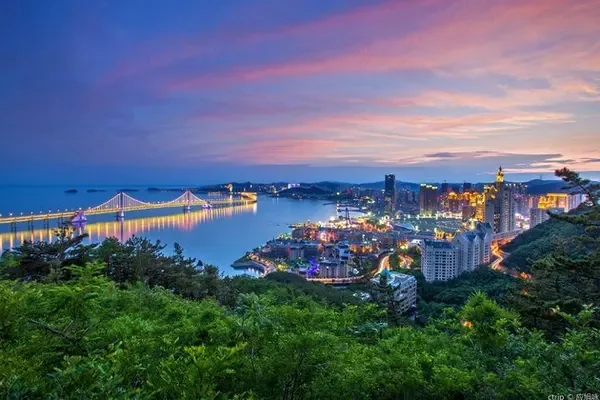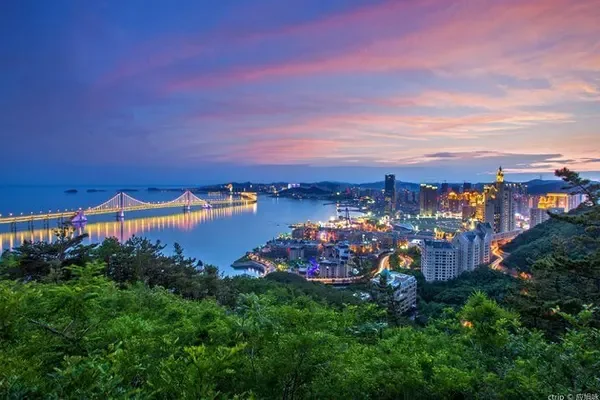Several investigations and excavations of the Xixia Mausoleum began in the 1970s. Judging from the obtained building components and the pattern of the foundation of the site, the Xixia Mausoleum has a cemetery complex on the ground for commemoration, sacrifice, and viewing. Each cemetery occupies an area of The area is about 100,000 square meters.



Taking Mausoleum No. 3 as an example, the entire cemetery is composed of individual buildings such as the corner platform, the que platform, the stele pavilion, the moon city, the inner city, the dedication hall, the tomb passage, and the mausoleum tower. There are conical pier corners at the four corners of the imperial mausoleum, which indicate the area of the mausoleum. From the plate tiles, tube tiles, tiles, pinga, and waisted lotus seats unearthed from the surrounding ground, it can be inferred that there should be buildings that blend with Buddhist art on the pier. From south to north, there are two symmetrical que platforms in the domain. The que platforms are truncated cones. There are red, gray pottery, green glazed terracotta tiles, and remnants of building components such as set beasts, pinga, and capricorns unearthed from the surrounding ground. There should also be a building that blends Buddhism and art on top of the truncated top of Que Terrace. There is one stele pavilion each, the base of the stele pavilion is rounded and square, and there is a circular building on the base. There are 4 portrait steles on the east-west axis. Waist overturned rosettes, copper bells, pagoda brakes and other architectural components were unearthed. It is speculated that the stele pavilion is a combination of Han and Tibetan architecture. The city wall is rammed with earth, divided layer by layer, with a residual height of 3 meters. The south wall of Yuecheng is opened in the center, and there are stone statues on both sides of the Shinto in the city; There are three connected circular cylinder gates on the side, and the unearthed relics on the ground include tiles, dripping water, owl kisses, set animal pinga, sea lions, and overturned rosettes. Chiwen is a decorative component at both ends of the main ridge of the large roof building, so it is speculated that the south gate is a 5-bay intermittent hilltop building; the east, west, and north gates are 3-bay buildings. The foundation of the corner wall of the city is covered with rammed earth with bricks, and only the rammed earth wall remains on the ground. There are five conjoined cylinders at the east and west corners of the south wall, and there are seven conjoined cylinders at the east and west corners of the north wall. . Its shape is similar to the rammed-earth building at the northwest corner of Heishui City. There are five bowl-covered towers on the corner of Heishui City, which are the landmark buildings of Heishui City. .



In September 1979, after investigating the buildings in the northwest corner of Heishui City, Mr. Chen Bingying wrote: "In the northwest corner of the city wall, there are 5 pagodas (the towers are built on the city wall, which is very rare)..." in the description of Qingkulun City At that time, he wrote: "Qingkulun City is square...the four corners of the wall are expanded with large round soil bags.... In the middle of the south, west and north walls, each has a bulge, which originally protruded from the city wall and is taller and thicker than the city wall. According to this material, it can be speculated that there are stupa-style buildings built on the four corners of the city wall of Mausoleum No. 3. The dedicated hall in the city is in the center, with an octagonal platform, and in the center of the platform there are 12 square columns arranged in four rows. Some experts speculate that the dedicated hall is a circular pavilion with a pointed roof. The octagonal tower-shaped rammed earth platform remains in the west of the mausoleum. Level 5 remains, should be level 7. The shape of each level of the rammed earth platform is composed of rammed earth slope surface and vertical surface. It is speculated that the slope is the eaves of the wooden structure, and the upper surface is covered with tiles; The rammed earth solid tower with eaves protruding layer by layer. The overall building breaks the symmetrical layout of single buildings along the central axis in the Central Plains and the shape of turrets built with corner walls. It is speculated that the cemetery building is like a large temple complex, and the stupa-style Tibetan towers are densely distributed at the que and corner walls. The gate architecture of China's traditional large-roof mausoleum is very grand, and the architectural shape, architectural complex, and architectural decoration highlight Buddhist aesthetics.







In September 1979, after investigating the buildings in the northwest corner of Heishui City, Mr. Chen Bingying wrote: "In the northwest corner of the city wall, there are 5 pagodas (the towers are built on the city wall, which is very rare)..." in the description of Qingkulun City At that time, he wrote: "Qingkulun City is square...the four corners of the wall are expanded with large round soil bags.... In the middle of the south, west and north walls, each has a bulge, which originally protruded from the city wall and is taller and thicker than the city wall. According to this material, it can be speculated that there are stupa-style buildings built on the four corners of the city wall of Mausoleum No. 3. The dedicated hall in the city is in the center, with an octagonal platform, and in the center of the platform there are 12 square columns arranged in four rows. Some experts speculate that the dedicated hall is a circular pavilion with a pointed roof. The octagonal tower-shaped rammed earth platform remains in the west of the mausoleum. Level 5 remains, should be level 7. The shape of each level of the rammed earth platform is composed of rammed earth slope surface and vertical surface. It is speculated that the slope is the eaves of the wooden structure, and the upper surface is covered with tiles; The rammed earth solid tower with eaves protruding layer by layer. The overall building breaks the symmetrical layout of single buildings along the central axis in the Central Plains and the shape of turrets built with corner walls. It is speculated that the cemetery building is like a large temple complex, and the stupa-style Tibetan towers are densely distributed at the que and corner walls. The gate architecture of China's traditional large-roof mausoleum is very grand, and the architectural shape, architectural complex, and architectural decoration highlight Buddhist aesthetics.








To visit Ningxia, you can choose the local professional tourist transportation Ningxia Tourist Scenic Spot Through Train. The staff all wear yellow vests, and the little yellow people are hospitable. There are two tourist distribution centers in the new city railway station and the crescent moon in the old city. The square is convenient for accommodation nearby, there are many hotels, and the transportation is convenient. It is not far from the civil aviation bus, and it is very convenient whether it is by train or plane. The through train of the scenic spot has opened the line from the urban area to the scenic spots around Yinchuan, such as Shahu, Huangsha Ancient Ferry, Shuidonggou, Zhenbeibao Western Film and Television City, Xixia Royal Tomb, Helan Mountain Rock Painting, Shapotou, etc., which is very convenient.

